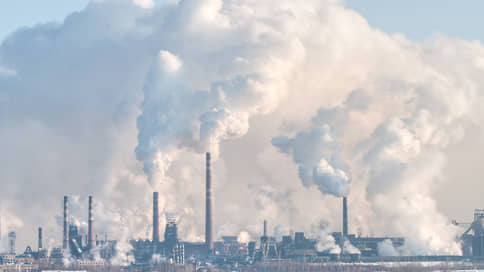On Sakhalin, the first transaction of the sale of carbon units took place

The Sakhalin climatic experiment, which started in this region as far back as 2022, entered the phase of practical implementation-the first transaction of the sale of quotas for emissions of greenhouse gases took place. According to the Ministry of Economy, it was also first estimated by the excess of emissions over the Kvota installed enterprise. A preliminary analysis of the effectiveness of carbon regulation mechanisms tested on Sakhalin will be carried out in early August. However, their scaling to other regions is expected no earlier than 2028, when the Sakhalin experiment is completed.
In the Russian Federation, the trade units of quotas for greenhouse gas emissions (PG) – Sakhalinnergo (RusHydro group) sold 384 units of the quota to the Noglyksky Vodokanal municipal enterprise. The amount of the transaction is not disclosed.
The buyer in 2024 exceeded the quota, and he had a choice: to pay for its excess to the region’s budget or compensate for non -compliance with carbon assets (units of quota or carbon units from the implementation of climatic projects), acquiring them from another company. Thanks to the transaction, the “Noglyksky Vodokanal” was credited in the register of carbon units by excess of emissions over the quota established by it.
Recall that the goal of the Sakhalin experiment is to achieve the carbon neutrality of the region by the end of 2025 (see. « Kommersant » dated February 16, 2022). 35 companies are involved in it to reduce PG emissions by almost 160 thousand tons of CO2-evivalent.
One of the tools used is the introduction of emissions for the period 2024–2028 to stimulate enterprises to reduce carbon trace from production activities. The meaning of the mechanism – the company must pay for the exceeding the quota. If they are not selected, they are accrued by the units of the quota (1 unit is 1 tons of carbon dioxide), which the enterprise can sell or take into account when “repayment” of future emissions.
As the first deputy minister of economic development, Maxim Kolesnikov, explained to Kommersant, Sakhalin plays the role of the first landfill in the Russian Federation, at which a system of market circulation of carbon assets is created and the experience of regulation is accumulated.
According to him, during the experiment “not only a carbon management culture is formed in enterprises, but also indirect environmental effects are achieved that improve the quality of life of people, including by transferring transport to pure types of fuel, gasification of energy objects and increasing energy efficiency in general”. According to the deputy chairman of the Government of the Sakhalin Region Vyacheslav Alenkov, one of the tasks of the experiment is the formation of a full carbon market with the involvement of a quota units.
Until June 30, the experiment participants must present the Ministry of Economics results on reducing greenhouse gas emissions and start selling or buying units of abbreviations. The department explained that the results of these efforts and analysis of the effectiveness of carbon regulation mechanisms will be presented at the International Forum of Sustainable Development: Climate Aspect, which will be held in Yuzhno-Sakhalinsk on August 1–2.
Decisions on the further scaling of carbon regulation mechanisms for other regions will be taken depending on the effectiveness of the Sakhalin experiment, and it will end only in 2028.
Recall that the authorities now do not intend to create excessive pressure on the business regarding the climatic agenda was previously stated by Minister of Economics Maxim Reshetnikov (see Kommersant on February 17). So so far in the Russian Federation they continue to test the “soft model” of regulation, which involves the implementation of voluntary climatic projects without the establishment of quotas.








